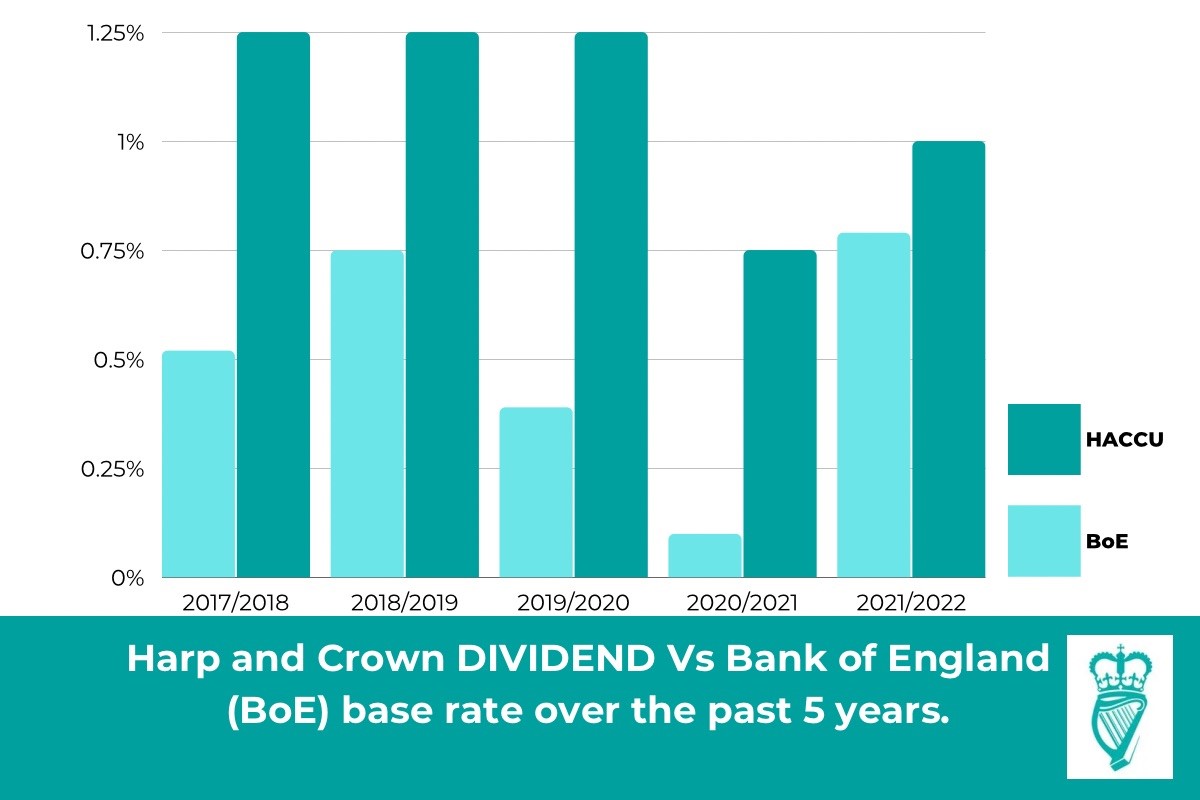

Finance
What Is A Tax Credit Apartment
Published: January 12, 2024
Looking for affordable housing options? Learn how tax credit apartments can help you save money on rent and improve your financial situation. Explore the benefits of finance-focused tax credit apartments today.
(Many of the links in this article redirect to a specific reviewed product. Your purchase of these products through affiliate links helps to generate commission for LiveWell, at no extra cost. Learn more)
Table of Contents
Definition of a Tax Credit Apartment
A tax credit apartment is a type of rental housing that offers affordable options for individuals and families who meet specific income requirements. These apartments are typically designated as part of a government program aimed at providing affordable housing solutions. The primary goal of tax credit apartments is to address the housing needs of low-income households and ensure that they have access to safe and decent housing.
Unlike traditional subsidized housing programs, tax credit apartments are funded through a tax credit system, which encourages private developers to construct or rehabilitate rental properties for affordable housing purposes. In essence, the government provides tax incentives to these developers in exchange for offering a certain number of units at reduced rental rates. This system allows for more flexibility and innovation in providing affordable housing options.
Each tax credit apartment community has a specific number of units reserved for eligible individuals or families. The rent for these units is typically calculated based on a percentage of the tenant’s income, known as the “income-restricted” or “income-based” rent. This ensures that low-income households pay an affordable amount for their housing, while still allowing developers to recoup the costs of construction or rehabilitation.
It is important to note that the term “tax credit apartment” is often used interchangeably with other terms such as “low-income housing” or “affordable housing.” While there may be some overlap in the eligibility criteria, tax credit apartments specifically refer to housing developments that are part of the tax credit program.
These apartments can vary widely in size, location, and amenities. Some tax credit apartments may offer additional services, such as community centers, recreational facilities, and support programs for residents. The goal is to create communities that not only provide affordable housing but also foster a sense of belonging and well-being among residents.
In summary, tax credit apartments are a vital component of affordable housing initiatives. They offer a range of benefits to low-income individuals and families, providing them with safe and affordable housing options that they might not otherwise be able to afford. By combining public and private resources, tax credit apartments contribute to the overall stability and well-being of communities by addressing the critical need for affordable housing.
How Tax Credit Apartments Work
Tax credit apartments operate under a specific set of rules and regulations to ensure that affordable housing is provided to those who need it most. Here is a breakdown of how tax credit apartments work:
- Funding and Allocation: The funding for tax credit apartments comes from federal or state housing finance agencies. These agencies allocate tax credits to developers based on certain criteria, such as the location of the property, the number of units, and the target population. Developers can then use these tax credits to attract investors and secure financing for the construction or rehabilitation of affordable housing units.
- Income and Rent Restrictions: To qualify for a tax credit apartment, tenants must meet specific income limits set by the housing finance agency. These limits are based on the area’s median income and may vary depending on the household size. The rent for tax credit apartments is typically calculated as a percentage of the tenant’s income, ensuring that it remains affordable. This percentage is often capped at 30% of the household’s gross income.
- Compliance and Monitoring: Tax credit apartment communities are subject to regular compliance monitoring to ensure that they adhere to the program guidelines. This includes verifying tenant income eligibility, maintaining the required number of affordable units, and complying with quality and habitability standards. Developers and property managers are responsible for ongoing reporting and documentation to demonstrate compliance with the program requirements.
- Resident Selection: When a tax credit apartment becomes available, developers or property managers follow specific procedures to select eligible tenants. They typically prioritize applicants who meet the income requirements and ensure a diverse mix of residents. The selection process may involve submitting an application, providing documentation of income and household size, and undergoing a background check.
- Lease Terms and Re-certification: Tenants in tax credit apartments sign a lease agreement with the property management company, which outlines the terms and conditions of the tenancy. These lease agreements are typically for a fixed term, such as one year, and may include provisions for lease renewals. Additionally, tenants are required to undergo an annual re-certification process to confirm their continued eligibility and update income information.
Overall, tax credit apartments offer a unique housing solution for low-income individuals and families. Through the careful allocation of tax credits and adherence to program guidelines, these apartments provide affordable and stable housing options for those in need. By leveraging private investment and government incentives, tax credit apartments play a crucial role in addressing the affordable housing crisis and promoting equitable communities.
Qualifications for Tax Credit Apartments
In order to be eligible for a tax credit apartment, individuals and families must meet certain qualifications. These qualifications are typically based on income limits established by the housing finance agency. Here are the key factors that determine eligibility for tax credit apartments:
- Income Requirements: The primary qualification for tax credit apartments is meeting the income restrictions. These restrictions are based on the area median income (AMI) and are set at a percentage of that income. The specific income limits may vary depending on the location and household size. Generally, tax credit apartment programs prioritize low-income individuals and families who earn less than 60% of the AMI, although some programs may have higher or lower income limits.
- Household Size: The size of the household is also taken into consideration when determining eligibility for tax credit apartments. Generally, the larger the household, the higher the income limit. This ensures that families with greater financial responsibilities have access to affordable housing options.
- Citizenship or Immigration Status: Tax credit apartments require applicants to demonstrate their legal status in the country. Typically, eligible applicants must be U.S. citizens or legal residents. Some programs may also consider applicants with eligible immigration statuses, such as refugees or individuals with temporary protected status.
- Background Checks: Applicants for tax credit apartments may be subject to background checks, including criminal records and rental history. While a criminal record does not automatically disqualify an individual, certain offenses may impact eligibility, particularly if they pose a potential risk to other residents.
- Other Considerations: Some tax credit apartment programs may have additional qualifications or preferences, such as targeting specific populations or providing housing for individuals with disabilities. These considerations vary based on the specific program and the priorities of the housing finance agency or developer.
It is important to note that the qualifications for tax credit apartments can vary from one program to another and may be further refined by state or local regulations. Therefore, it is advisable for individuals seeking affordable housing to connect with the relevant housing agency or property manager to determine the specific eligibility criteria for the tax credit apartment they are interested in.
Overall, tax credit apartments provide an opportunity for low-income individuals and families to secure safe and affordable housing. By adhering to the qualifications set forth by the housing finance agency or developer, applicants can increase their chances of obtaining a tax credit apartment and fulfilling their housing needs.
Benefits of Tax Credit Apartments
Tax credit apartments offer a range of benefits for individuals and families in need of affordable housing options. Here are some of the key advantages of choosing a tax credit apartment:
- Affordability: The primary benefit of tax credit apartments is their affordability. These apartments are specifically designed to ensure that low-income individuals and families can access safe and decent housing without burdening their financial resources. The rent for tax credit apartments is typically set at a percentage of the tenant’s income, making it more manageable and affordable compared to market-rate rentals.
- Stability: Tax credit apartments provide much-needed housing stability for tenants. By offering long-term lease agreements, residents can enjoy the security of knowing that they have a stable place to live. This stability is crucial for individuals and families who may have experienced housing instability or precarious living situations in the past.
- Quality Housing: Tax credit apartments are subject to specific quality and habitability standards. Developers and property managers are required to maintain the apartments in good condition and address any necessary repairs or maintenance promptly. This ensures that residents have access to safe and well-maintained housing, improving their overall quality of life.
- Community Amenities: Many tax credit apartment communities offer additional amenities and services to enhance the living experience for residents. These amenities may include access to community centers, playgrounds, fitness facilities, and on-site support programs. These offerings foster a sense of community and enable residents to engage in social and recreational activities.
- Mixed-Income Communities: Tax credit apartments often strive to create mixed-income communities, where residents of various income levels live together. This diversity promotes social integration and allows individuals from different backgrounds to interact and learn from one another. It promotes a sense of community and breaks down barriers often associated with income-based housing.
- Access to Support Services: In some tax credit apartment communities, there are support services available to residents. These services may include financial counseling, job training programs, childcare assistance, or educational resources. Access to these services can help individuals and families improve their overall well-being and increase their chances of achieving financial stability.
It is important to note that the specific benefits and amenities offered by tax credit apartments may vary depending on the individual development or program. Prospective tenants should inquire about the specific offerings of the tax credit apartment they are interested in.
Overall, tax credit apartments provide a valuable solution to the affordable housing crisis. They offer affordable rents, stability, quality housing, and access to community amenities and support services. By addressing the housing needs of low-income individuals and families, tax credit apartments contribute to healthier and more inclusive communities.
Application Process for Tax Credit Apartments
The application process for tax credit apartments may vary slightly depending on the specific program or development. However, here are the general steps involved in applying for a tax credit apartment:
- Research and Find Available Tax Credit Apartments: Begin by researching and finding tax credit apartments in your desired location. You can start by visiting the websites of housing authorities, affordable housing organizations, or contacting local property management companies that specialize in affordable housing options. They can provide you with information about available tax credit apartments in your area.
- Gather Necessary Documentation: Before applying, gather all the necessary documentation to support your application. This may include identification documents, proof of income, tax returns, and any other relevant paperwork requested by the property management company or housing finance agency. Make sure you have a copy of all required documents to submit with your application.
- Complete the Application: Fill out the application form for the desired tax credit apartment. The application will typically require information about your household size, income, employment, rental history, and references. Take your time to accurately complete the application, as incomplete or incorrect information may delay the process.
- Submit the Application: Once you have completed the application, submit it along with all the required documentation to the property management company or housing finance agency. Follow the instructions provided by the application process, whether it’s submitting the application electronically, by mail, or in person.
- Wait for Notification: After submitting your application, you will need to wait for the notification of acceptance or denial. The processing time may vary, so be patient. The property management company or housing finance agency will inform you of the status of your application and whether you have been selected for a tax credit apartment.
- Provide Additional Documentation if Required: In some cases, you may be asked to provide additional documentation or to participate in an interview or screening process. It is important to comply with these requests and provide the requested information promptly to ensure the application process moves forward smoothly.
- Sign the Lease Agreement: If your application is accepted, you will be required to sign a lease agreement with the property management company. Read the lease carefully and ask any questions you may have before signing. The lease will outline the terms of your tenancy, including rent payment details, lease duration, and any other relevant information.
It is important to note that the application process for tax credit apartments can be competitive, as there may be a limited number of available units and a high demand. It’s advisable to apply to multiple tax credit apartment communities to increase your chances of securing a place.
Remember to always follow the specific instructions provided by the property management company or housing finance agency when applying for a tax credit apartment. By being organized, thorough, and patient throughout the application process, you will increase your chances of being selected for an affordable tax credit apartment.
Common Misconceptions about Tax Credit Apartments
There are several common misconceptions surrounding tax credit apartments that can lead to misunderstandings about their purpose and how they operate. Here are some of the most prevalent misconceptions and the truth behind them:
- Misconception 1: Tax Credit Apartments are the same as Section 8 Housing: One common misconception is that tax credit apartments are the same as Section 8 housing. While both provide affordable housing options, they operate under different programs. Tax credit apartments are funded through tax credits and are developed by private entities, whereas Section 8 housing is funded by the government and provides rental assistance to eligible individuals and families.
- Misconception 2: Tax Credit Apartments are only for the extremely low-income individuals: Some people believe that tax credit apartments are solely intended for individuals with very low incomes. While tax credit apartments do prioritize low-income individuals and families, the income limits can vary based on factors such as the location and unit size. Therefore, individuals with a range of income levels may be eligible for tax credit apartments.
- Misconception 3: Tax Credit Apartments have substandard quality: Another misconception is that tax credit apartments are of lower quality compared to market-rate apartments. However, tax credit apartments are subject to specific quality and habitability standards, ensuring that they meet certain criteria for safety, maintenance, and overall condition. Developers and property managers are responsible for maintaining the quality of these apartments, offering safe and comfortable living environments for residents.
- Misconception 4: Moving into a Tax Credit Apartment is complicated: Some individuals believe that the process of moving into a tax credit apartment is overly complex and burdensome. While there is an application process and certain eligibility criteria to meet, the steps involved are similar to those of other rental properties. It’s important to follow the instructions provided by the property management company or housing finance agency and provide the necessary documentation to complete the application process.
- Misconception 5: Tax Credit Apartments only offer bare-bones amenities: It is often assumed that tax credit apartments lack amenities and services compared to market-rate apartments. However, many tax credit apartment communities offer a range of amenities such as community centers, playgrounds, fitness facilities, and support programs. These amenities may vary depending on the specific development or program, but the aim is to create a comfortable and inclusive living environment for residents.
It is important to dispel these misconceptions as they can lead to misinformation and prevent individuals from exploring the benefits and opportunities that tax credit apartments provide. By understanding the reality of tax credit apartments, individuals can make informed decisions about their housing options and potentially find a suitable and affordable place to call home.
Alternatives to Tax Credit Apartments
While tax credit apartments offer affordable housing options for individuals and families, there are alternative solutions worth considering. Here are some alternatives to tax credit apartments:
- Subsidized Housing: Subsidized housing programs, such as Section 8, provide rental assistance to eligible individuals and families. These programs offer vouchers that can be used to cover a portion of the rent in privately owned rental properties. Unlike tax credit apartments, subsidized housing programs generally have income-based eligibility requirements and provide direct financial support rather than tax incentives to property owners.
- Public Housing: Public housing is a government-owned and managed housing option that provides affordable rental units to low-income individuals and families. Public housing is typically operated by local housing authorities and offers various types of housing units, including apartments and townhouses. Unlike tax credit apartments, public housing units often have a fixed rent amount based on the tenant’s income.
- Low-Income Housing Trust Fund Projects: Some states and localities have established Low-Income Housing Trust Funds to support the development of affordable housing. These funds provide financial resources to build or renovate rental properties specifically for low-income individuals and families. These projects offer similar affordability benefits as tax credit apartments but may operate under different funding mechanisms.
- Renting from Individual Landlords: Renting from individual landlords can be an alternative to tax credit apartments. Some landlords may offer affordable rental units or be willing to negotiate rental prices based on individual circumstances. Searching for rental listings, collaborating with local housing organizations, and networking within the community can help in finding affordable housing options from individual landlords.
- Shared Housing: Sharing a home or apartment with others can significantly reduce housing costs. Consider exploring shared housing arrangements where individuals or families split the expenses of rent, utilities, and other living expenses. This option can be an effective way to save money and access affordable housing without relying on specific subsidized or tax credit programs.
It is important to research and evaluate the available alternatives to tax credit apartments based on individual circumstances and preferences. Each option has its own eligibility requirements, benefits, and limitations. Exploring all available resources and assistance programs in your community can help you find the most suitable and affordable housing solution.
Remember to consider factors such as location, affordability, amenities, and support services when exploring alternatives to tax credit apartments. By being proactive and staying informed about the various options available, individuals and families can find the housing solution that best meets their needs.
Conclusion
Tax credit apartments play a vital role in providing affordable housing options for low-income individuals and families. These apartments operate under government programs that incentivize private developers to offer reduced rental rates in exchange for tax credits. By addressing the affordable housing crisis, tax credit apartments contribute to creating stable, inclusive, and thriving communities.
Throughout this article, we have explored the definition of tax credit apartments and how they work. We have also discussed the qualifications required to be eligible for these apartments and highlighted their numerous benefits, including affordability, stability, quality housing, and access to community amenities. Additionally, we have addressed common misconceptions surrounding tax credit apartments and provided alternative housing options.
It is important for individuals seeking affordable housing to understand the availability and advantages of tax credit apartments. By dispelling misconceptions and gaining accurate knowledge about the application process, eligibility requirements, and benefits of tax credit apartments, individuals can make informed decisions about their housing options.
Ultimately, tax credit apartments offer a lifeline to those in need, ensuring that even those with limited financial resources can secure safe, comfortable, and affordable housing. By combining public and private resources, tax credit apartments contribute to the overall well-being and stability of communities and pave the way for a more equitable society.
Whether you are in search of affordable housing or are simply seeking to expand your understanding of different housing options, tax credit apartments provide a valuable solution. By leveraging the resources and incentives available through the tax credit program, developers and property managers are able to provide a sustainable solution to the affordable housing crisis.
Remember to explore the availability of tax credit apartments in your area, gather the necessary documentation, and follow the application process diligently. By taking advantage of the benefits offered by tax credit apartments and considering alternative housing options, you can find a housing solution that suits your needs and ensures a brighter future for you and your family.














